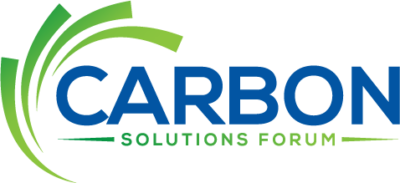
Milestone Carbon on CCS progress, permitting Challenges and regional collaboration in the Permian
As part of our lead-up to the 5th Permian Energy Dialogues in Austin this September, we caught up with Chris Davis, Senior Vice President, Carbon Sequestration at Milestone Carbon, one of the participating companies joining this year’s forum. With active projects across the Permian and deep involvement in carbon sequestration infrastructure, Milestone brings valuable perspective on regulatory timelines, integration with existing operations, and new opportunities for collaboration across the region’s energy ecosystem.
Energy Dialogues: What lessons has Milestone Carbon learned from navigating the Class II and Class VI permitting process, and what regulatory improvements would accelerate carbon sequestration project timelines?
Chris Davis, Senior Vice President, Carbon Sequestration, Milestone Carbon: Class VI primacy continues to be the highest priority for improving the permitting process. A secondary consideration would be a streamlined process for addressing public comments and protests.
Energy Dialogues: How can CCS be integrated into existing gas and midstream operations, and what makes the Permian Basin an attractive location?
Chris Davis, Senior Vice President, Carbon Sequestration, Milestone Carbon: Many natural gas processing facilities in the Permian Basin also have CO₂ removal units which are separating CO₂ from gas streams and venting to atmosphere. Milestone is designing facilities to gather these emissions for permanent sequestration as well as other potential future uses.
Energy Dialogues: How do Milestone’s sequestration strategies avoid the risks tied to produced water disposal and offer an alternative path for long-term environmental stewardship?
Chris Davis, Senior Vice President, Carbon Sequestration, Milestone Carbon: First, Milestone’s wells are required to be located away from other wells, including water disposal wells. The storage location must be free from artificial penetrations to ensure containment, and Milestone has leased over 40,000 acres of land to ensure that the formations we use for injection are sufficiently isolated from other deep wells.
Second, the volumes of CO₂ injected within the formation are less than water disposal wells. For example, Milestone’s CO₂ injection wells are permitted with capacities which are a fraction of typical water disposal wells (<10,000 bpd for Class II) and are typically spaced thousands of acres apart.
Energy Dialogues: Can you share how Milestone is working with non-major emitters to make CCS more accessible across the Permian Basin, particularly for midstream, industrial, or power producers?
Chris Davis, Senior Vice President, Carbon Sequestration, Milestone Carbon: In addition to the CO₂ gathering from natural gas processing facilities which can be disposed of in Class II wells, Milestone is permitting multiple Class VI wells within our carbon hubs to accommodate clusters of emitters beyond traditional oil and gas, including direct air capture and power generation.
Initial injection capacities for each hub will be 0.5–1.0 million tonnes of CO₂ per year and subsequently expanded to 2.0–4.0 million tonnes of CO₂ per year.
Energy Dialogues: Where do you see the biggest opportunities for CCS hubs in the Permian to support long-term energy development, and how do you envision collaboration with data centers, hydrogen, or LNG projects?
Chris Davis, Senior Vice President, Carbon Sequestration, Milestone Carbon: Focusing on pre-2030 start-up for each hub with gas processing emissions allows larger, greenfield projects to plan their developments knowing where they can dispose of emissions. The Permian Basin has many of the elements necessary to support low-carbon industrial facilities (e.g., gas-fired power generation with CCS) and those that rely on such facilities, including data centers. Furthermore, as more Permian gas plants become economically attractive for CCS, less CO₂ may be extracted downstream at the LNG facilities, potentially reducing operating costs.





